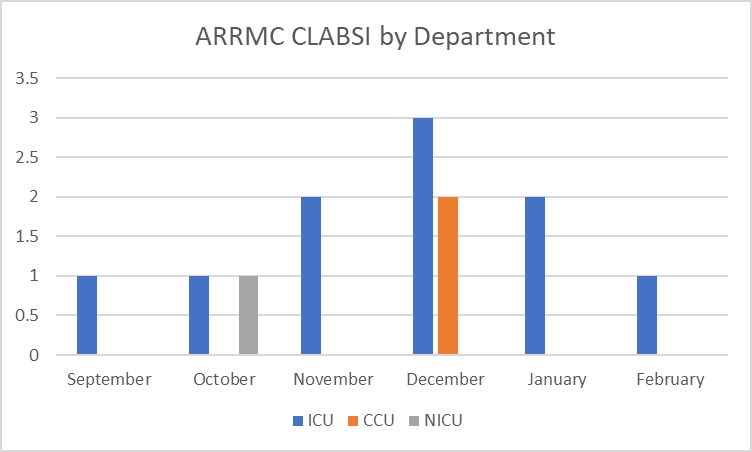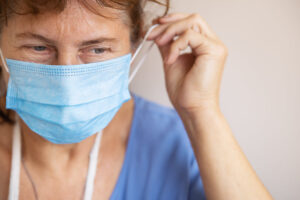Share:
ARRMC sees a winter spike in CLABSIs
A recent run of central line infections at ARRMC has Asante team’s reviewing process. The organisms cultured from these patient infections range from those associated with skin and mucosa (like Staphylococcus epidermidis), to those associated with the gut or oral microbiota (Prevotella buccae, Escherichia coli), and those more widely distributed in the environment (Burkholderia, Acinetobacter, Rhodotorula rubra). The breadth of organisms identified indicates we have opportunity to prevent transmission of contaminates to our patients as a whole.

Organisms like Stenotrophomonas and Chryseobacterium are naturally occurring and water-associated. Although they usually don’t cause human illness, they represent opportunistic pathogens that pose the greatest risk to our most vulnerable patients — the immunocompromised and our sickest patients in critical care.
The best defense against waterborne organisms![]() is to keep tap water away from direct or indirect contact with our patients. The most common routes of transmission are:
is to keep tap water away from direct or indirect contact with our patients. The most common routes of transmission are:
- Use of tap water for patient care, including rinsing or cleaning of equipment or oral hygiene.
- Splashes or aerosols onto the patient, such as through breaches in skin, including open wounds or lines.
- Contaminated supplies or equipment from splashes, aerosols or contact with contaminated surfaces.
These types of infections are not limited to hospitalized patients. We also see instances of community- acquired infections, with positive cultures returned as the time of admission. This means there isn’t something unique per se about the hospital setting as a source of infection. It’s the standard precautions (hand hygiene, hand hygiene, hand hygiene) and aseptic technique that is so critical for preventing these organisms from reaching our patients when they are at their most vulnerable.
This is the not the first time we have seen upticks in these types of infections. Speaking with now retired infection preventionists, Asante opted to increase isolation guidelines for Stenotrophomonas from standard to contact precautions many years ago in response to an increase of infections observed in ventilated patients. Burkholderia infections were previously linked to rinsing nebulizer equipment with tap water.
For a table of best practices to prevent infections, click here.
Teams are diligently focusing on changing course for these infections. Thank you for helping to keep our patients and our community safe.
If you have a question, please contact the author or relevant department directly.



